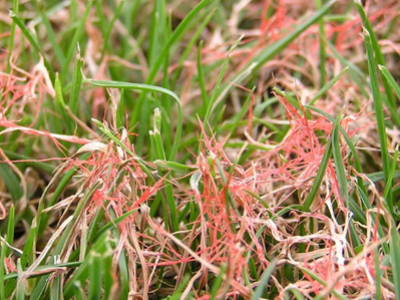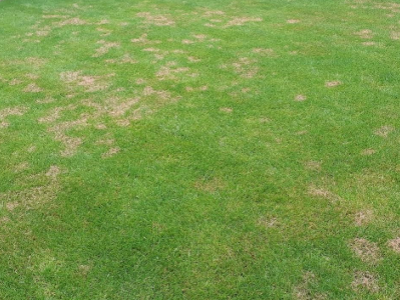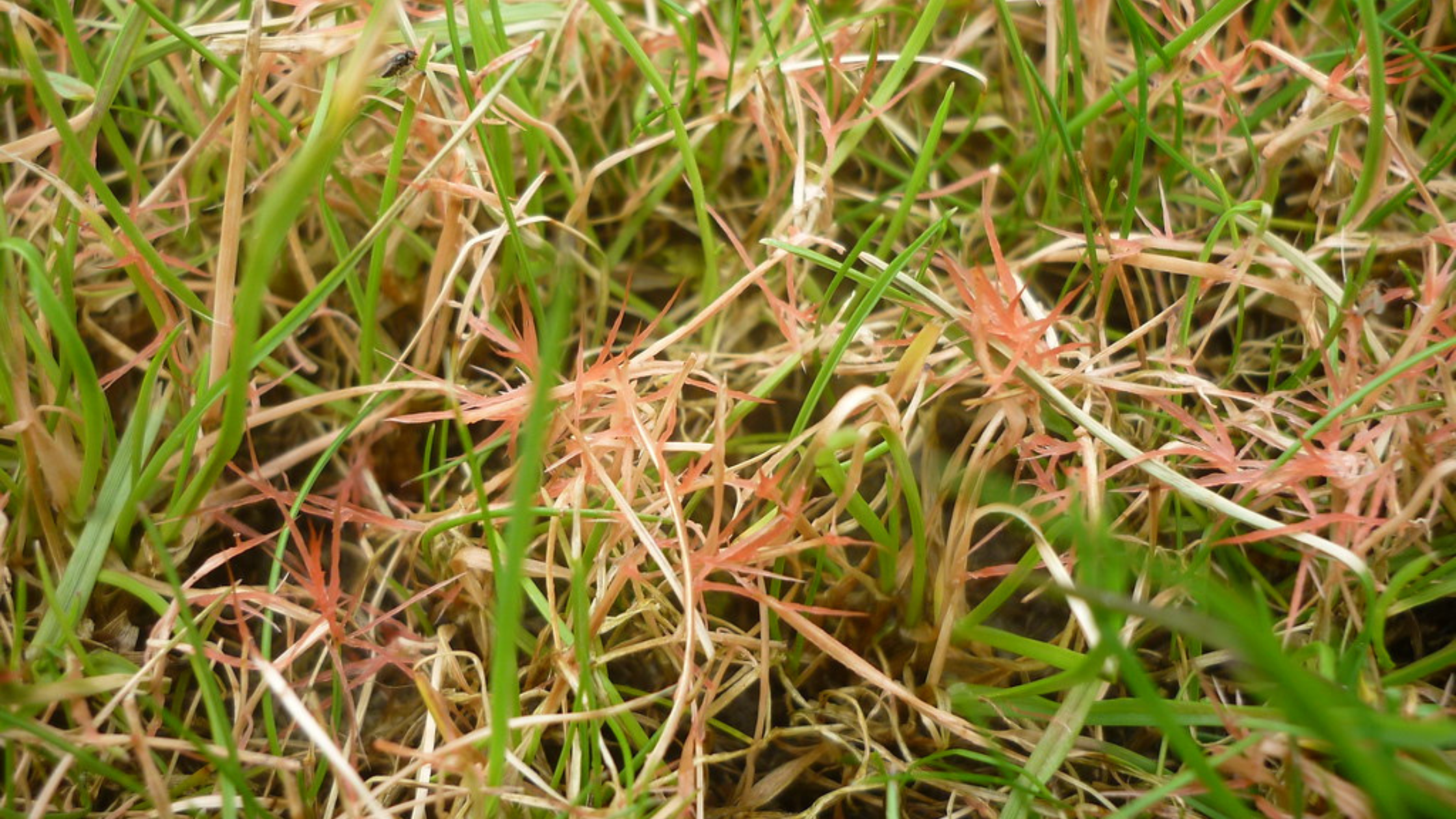One of the biggest spring and fall threats to your lawn are fungal diseases like Red Thread, which can occur in weak or susceptible parts of the lawn when certain environmental conditions are met like high temperatures, humidity, and saturated soil. Here we’ll show you what Red Thread is, how you can minimize the risk of it, and what to do if it is present. Spoiler alert: it looks worse than it is.
What is Red Thread
Red Thread is a pesky fungal disease that targets various types of turfgrasses, such as Kentucky bluegrass, tall fescue, and perennial ryegrass. Symptoms occur primarily in the spring and fall, when cooler temperatures, damp conditions, and high humidity create an environment conducive to the disease. Infected blades of grass will initially display twisted red or pinkish "threads" on tan blades of grass. Red Thread throughout a yard can create a splotchy, tan polka-dot appearance but it is usually not permanent.
 A close-up of active Red Thread on blades of grass. The pinkish color will give way to a straw-colored tan.
A close-up of active Red Thread on blades of grass. The pinkish color will give way to a straw-colored tan.
Preventing Red Thread
The best way to prevent Red Thread is to take steps to keep your lawn healthy and well-maintained, including:
-
Mow your lawn 3-3.5 inches. Short lawns can be easily stressed and long lawns have a tendency to remain damp.
-
Water deeply and infrequently to avoid excessive moisture on the grass blades and to keep your soil from becoming waterlogged, both of which can create ideal conditions for Red Thread to grow. If you are receiving adequate rainfall, you do not need to irrigate your lawn.
-
Aerate your lawn regularly. This will help to improve the drainage of the soil.
-
For frequent, reoccurring outbreaks of Red Thread and other fungi, consider a Disease Prevention Program. It is important that preventative fungicides are applied at the start of the season and before infection to be effective. For more information and to see if this is right for you, please speak with an Account Manager.
 Red Thread throughout a yard can create a splotchy, tan polka-dot appearance but it is not permanent.
Red Thread throughout a yard can create a splotchy, tan polka-dot appearance but it is not permanent.
What to do if you see signs of Red Thread
Although Red Thread can be an eyesore, fortunately, it is temporary. Having good turf health will allow your lawn to bounce back strong. Take the following steps should Red Thread be present on your lawn:
-
Bag your grass clippings and clean the underside of your mower deck. It is important not to keep introducing Red Thread into your lawn.
-
If Red Thread is towards the top of the grass blades, allow the turf to grow out slightly before mowing and bagging to cut off the infected parts of the blades.
-
Dampness is your enemy. While you cannot control the weather, ensure you are not worsening conditions. Cut back on watering when there is ample rainfall and Red Thread is present.
-
For serious or large infections, a One-time Fungicide Application will help control further spread of Red Thread, but it will not be completely eradicated until the disease pressure subsides. For more information and to see if this is right for you, please speak with an Account Manager.
Conclusion
Fungi are a naturally occurring part of the environment that can spike during specific conditions like high temperatures, humidity, and saturated soil. A Disease Prevention Program can largely prevent these spikes, but if preventative fungicides aren’t an option, the important thing is having a solid foundation of turf health so your lawn can recover quickly and thoroughly.
In the case of Red Thread, the change in your lawn’s appearance that it causes will pass and rebound in a healthy lawn. If you have a serious infection or want to prevent further spread, a One-time Fungicide Application will stop things in their tracks but it isn’t an instant curative.
For more in-depth strategies and information, please continue reading our blog. Together, let's keep your lawn healthy and thriving!
